I recently visited Corfe Castle's castle in Dorset, England. The castle is a Norman one that was built from 1086 by William the Conqueror. The castle has been extended throughout the centuries before meeting its end during the Civil War in 1646. Before visiting the castle, I saw its smaller replica (which was constructed to appear as if it were the mid-1600s before it was ruined) during my visit to Corfe Castle Model Village. I've driven past the castle a number of times and have seen it in amazing view and sunsets as there are some beautiful views of the castle, but I had never stopped as I'd never had time to before.
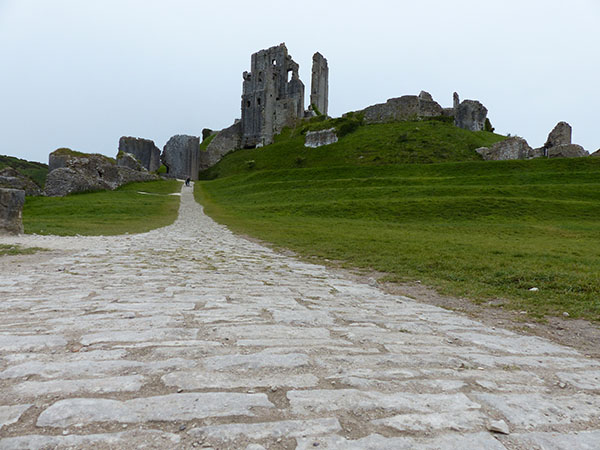
The name 'corfe' means a gap in the hills, and this land was inhabited in the Bronze Age. The castle was modernised by Henry VII for his mother. It was a thriving and important community. It's now just a small village in Dorset. The castle was once very important and was where the crown jewels were stored for a time. It was also a stately home and a prison and was renovated a lot over the years before becoming neglected and then ruined. It contains a dungeon, although this cannot be seen today, and many important people and peasants were prisoned here and died here.
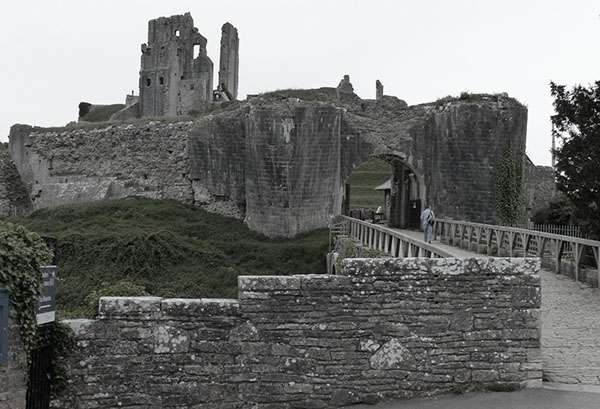
The castle has two ditches to cross via a bridge - one at the entrance and the other inside the castle walls. It contained the castle keep, which is perched on top of the hill. The palace is also on the hill, but not much remains of it. The castle was constructed with Purbeck stone, which is the local stone in the area here along the Jurassic Coast. This part of England is noted for its fossils. The stone here contains fossils. In fact, the polished Purbeck stone appears like marble. The castle was thought to have some of the exterior walls smoothed and polished to give it this shine, but over time, the water eats away at it and it becomes dull again. It must have really looked stunning.
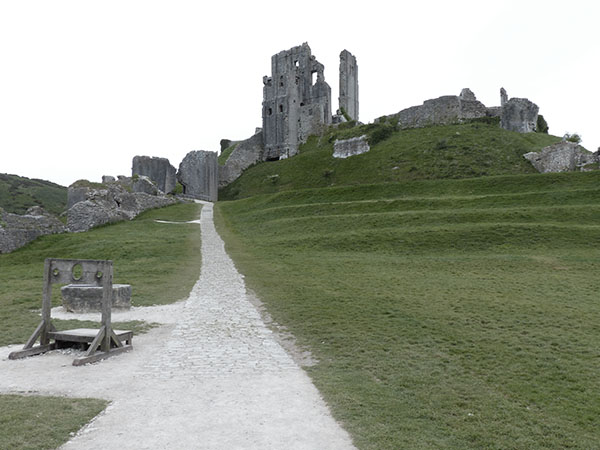

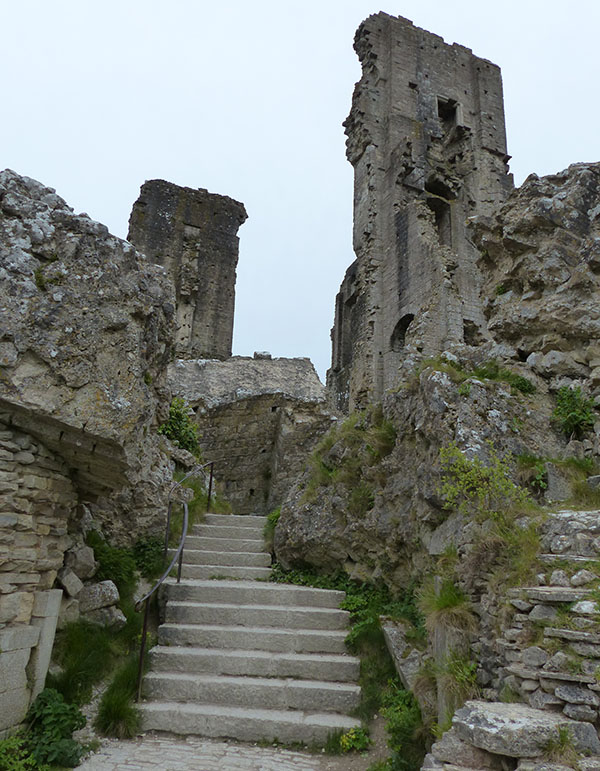


A small hill near the castle was the site of St. Stephen's Seige Castle, which I believe was on the hill in front in the below photograph. This was constructed to help overthrow the castle, which is what happened in the Civil War when this castle was used to do just that.
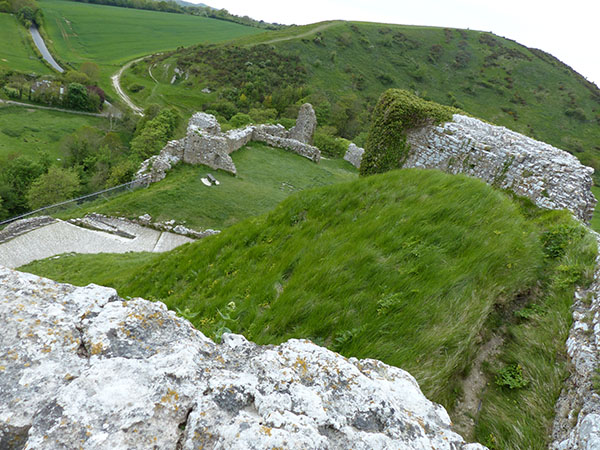

There are wonderful views from the palace over the town. Additional facts about the castle are that this was one of the first stone keeps (instead of timber). The castle took 8-9 years to build, and the village outside the walls was created (and grew) from the workers who worked on the building. The walls are 3 metres thick. The outside of the keep was white-washed (as a lot of castles were). Sheep currently graze in the castle grounds to keep the grass short.
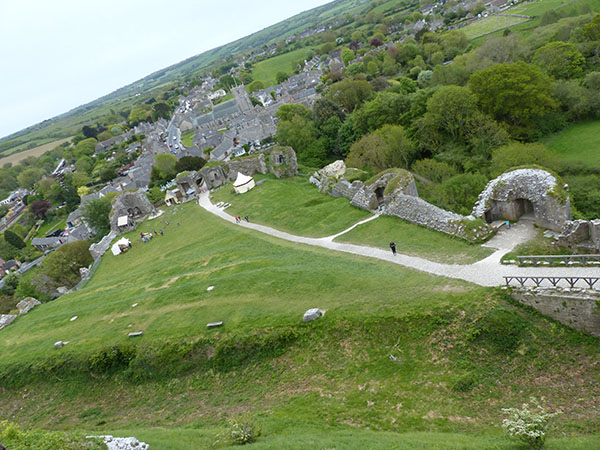
One of the boards at the castle had another interesting fact. In 2009, restoration work discovered some paint in the ruins of the palace. This paint probably dated from King John's time. The paint was arranged in checkerboard pattern in red, white, and black. Fascinating.
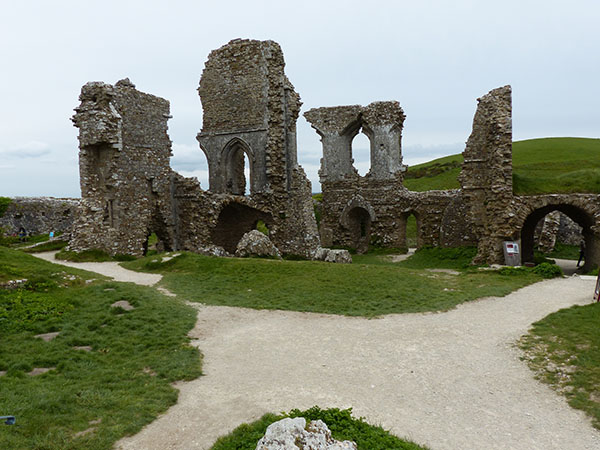
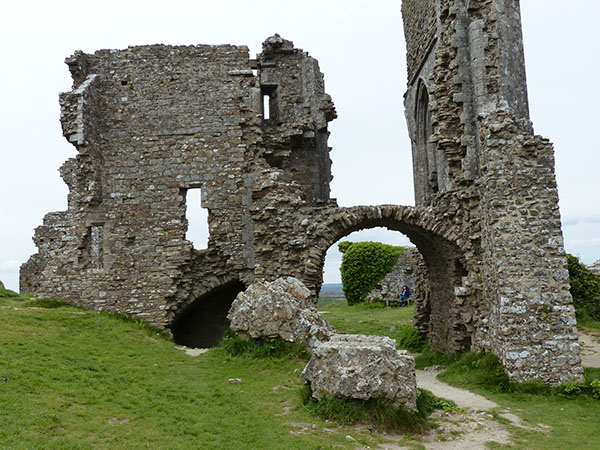

The palace, pictured above, would have been decorated elaborately. The stone carvings around the windows can still be seen today.
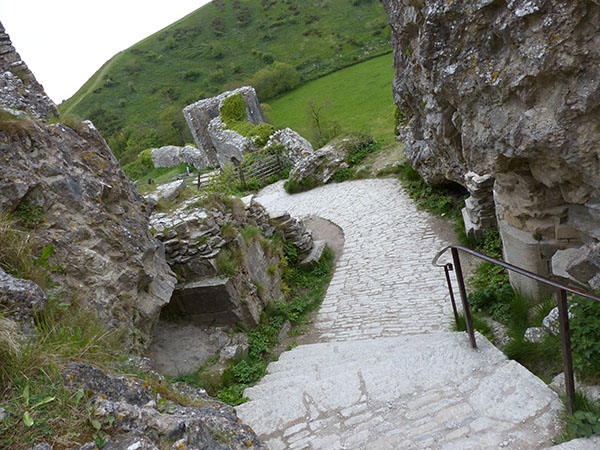
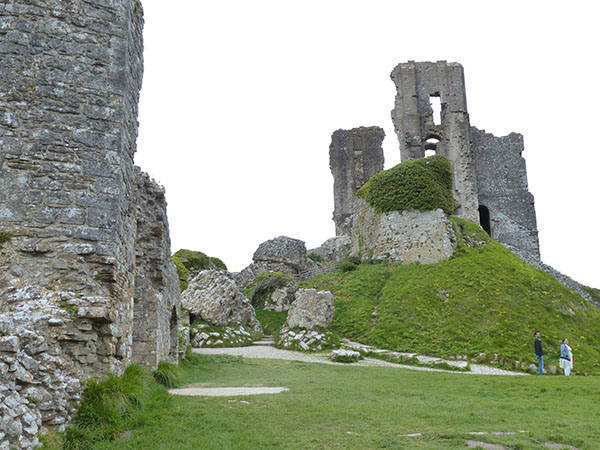
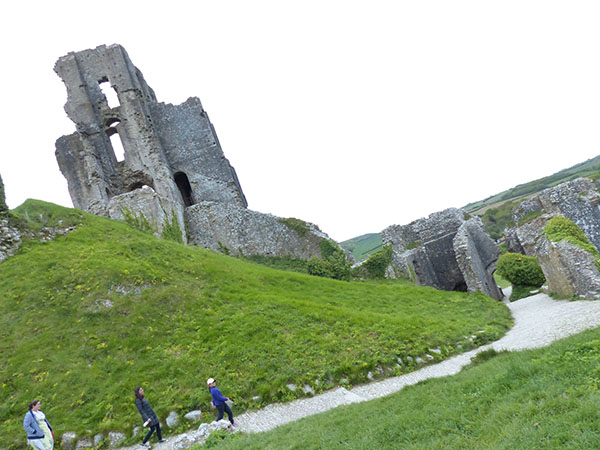
At the bottom of the hill inside the castle grounds were a couple of interactive areas that showed how the stonemasons worked and how to construct the windows. New windows are currently being constructed from the stones. It also showed samples of the rock.

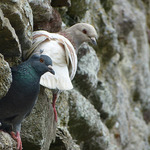
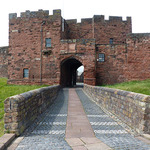
Leave a comment